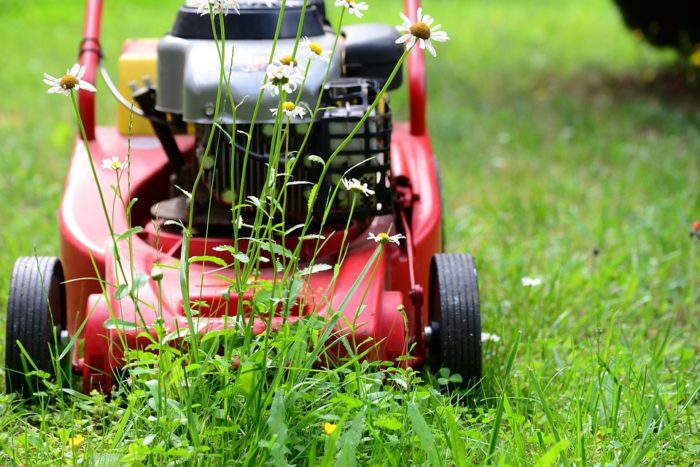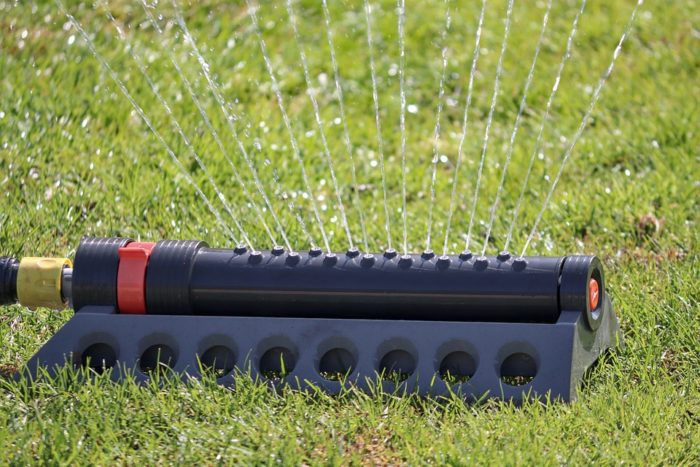An even, smooth, bump-free lawn is every lawn owner’s dream!
But like many dreams, this one also remains unfulfilled for a few because they don’t know how to level a yard adequately and properly.
Usually, they find the task too difficult or too expensive and therefore end up skipping the whole process.
The result? You are left with an uneven and difficult-to-maintain lawn which is also a tripping hazard!
Now, lucky for you that you stumbled upon it here!
Keep reading to find out how you can level your yard quickly and under budget and contribute to the overall lushness of your lawn!
Yard Leveling Requirement
Before you take on the job of leveling your yard, make sure that you have all the essential tools and equipment for the task at hand.
For yard leveling, you will need:
- Lawn Mower
- Top Soil
- Compost
- Sand
- Thatch Rake or Thatching Machine
- Shovel
- Wheelbarrow
- Leaf Rake
- Push Broom
How to Level Your Yard
Now, before you start working on how to level a yard, check the severity of the issue.
Are you just dealing with minor irregularities and bumps, or is the whole yard like uneven ground?
Assessing the underlying problem to tackle it correctly is the only way you can make sure that this doesn’t reoccur in the future.
Once examined and chosen an appropriate approach, follow the below-mentioned steps to level your yard:
STEP 1: Start with Mowing your Lawn
The first step in the process of yard leveling is to mow your lawn properly and adequately.
Cut your lawn short but not too short that you end up scalping it.
This is because if you cut your grass too short, it may get prone to drying out quicker.
This will change the overall quality of your yard, so make sure that you do not mow too low.

STEP 2: Dethatch the Lawn as Needed
The next step is to assess the volume of thatch in your yard and then dethatch as required.
What you need to do is take a closer look at the roots of your grass, examine the thatch and then prepare your lawn for landscape grading.
But wait, do you know what thatch is?
Well, thatch is basically that layer of dead grass and other organic matter which is at the base of your lawn’s turf.
Now, 1/4th to 1/2 inch of thatch is completely acceptable, but anything more than that becomes a problem because that will hinder your grass from getting adequate water and air.
This will, in turn, affect the overall quality and growth of your grass on the lawn.
You can eliminate the thatch by using a thatch rake, or in the case of a larger yard, you can run a dethatching machine over the grass, which you can easily rent from a home improvement store.
STEP 3: Remove the Grass from the Hollow Areas of your Lawn
Digging up the grass from the sunken, low areas is essential for leveling a sloping yard and is rule 101 on how to level a yard properly.
To do so, begin with checking your lawn for any low spots and/or divots that are deeper than 2-3 inches.
If you find any, then remove the grass from the top of those spots by placing the outer blade of your shovel on the edge of the said area and sliding it down.
Make sure that you slide it under at least 2-3 inches so that you can properly get under the roots of the grass.
After you’ve done that, remove the sod by pulling the grass up with a shovel, thus exposing the underlying dirt.
STEP 4: Make Sand & Soil Mix
After exposing the underlying area, you need to make a soil top dressing mix to fill the hole and put the grass back on top of it.
You can use a combination of topsoil, sand, and compost to create a suitable level of level dirt for your yard.
This mixture will not only provide your grass with adequate nutrients but also keep your yard leveled over time.
STEP 5: Even Out Your Lawn
Now, the next step on how to level a yard is to even out your lawn.
After you’ve filled the divots and the holes in your lawn, spread the top mix and the level backyard dirt all across the lawn to the depth of 1/4th to ½ inches.
Make sure to keep this layer thin; even if you feel you need more than ½ inch, avoid doing so because you might end up choking your grass.
However, if you still feel that you need to add an extra layer, you can reapply it later.
Now, to level out your backyard, evenly sprinkle the top dressing mix across the lawn.
Make sure that you work the mixture into the gradual pockets and low spots in your yard.
But again, ensure that you do not completely cover the grass blades as this will suffocate them and stunt their growth.
STEP 6: Adequately Water Your Lawn
After all the landscaping, pulling, mixing, and packing of your yard, you now need to run your lawn sprinklers and water them adequately.
This will help the topsoil mixture to properly settle into your grass and fill out any air pockets.
Furthermore, it will also rejuvenate your yard as it will amp up the dose of nutrients from the compost to your grass.

STEP 7: Reapply the Top Dressing as Needed
And finally, the last step on how to level a yard is to top-dress the topsoil mixture. This is if you feel like the first layer is not enough or visible anymore.
As discussed above in Step 5, after evenly spreading the mix for the first time, you might think that there is a need for another layer to completely level your backyard.
In that case, repeat the steps mentioned above and add another layer to your turf.
And that’s it! You are done! Now you very well know how to level a sloped yard!
Things to Remember While Leveling your Yard
- The first thing you need to remember in order to learn how to level a yard is the season to do this- the dry season is the best time to level your yard. There is a good chance of soil erosion if done during a rainy season.
- Backfilling the foundation properly is critical. If the soil is way too close to the wall cladding, termites may enter your home.
- While grading, any soil removed from the lawn can be reused.
- Always start where you are. You may have to work back and forth a few times, but you should be able to get the job done.
- Take your time and be careful not to damage the plants or soil in the process of leveling your yard.
- When you’re done leveling your yard, make sure to clean up any debris and put the plants back where they were before you started leveling the ground.
- Remember, it’s always better to take things slowly and one step at a time when leveling your yard.
- Uneven yards can be caused by drainage issues. You can improve the drainage of your soil by amending it.
- If you continue to work on your yard and notice consistently uneven ground, contact a home repair service to assess and repair potentially damaged water pipes.
How Much Does it Cost to Level a Yard?
Repairing lumps and bumps caused by foot traffic, digging, plantings, or thatchy grass should be simple and inexpensive. Most tools, such as a shovel and a bow rake, are likely already in your shed.
If you don’t have one, renting one can cost up to $80 per day. A manual thatch rake costs between $40 and $50.
When you level a yard, you may be able to move soil from high points to low points, but in other cases, you may need to purchase topsoil and sand to complete the project. A 40-pound bag of topsoil is typically less than $10.
Final Words
There is no denying that leveling your backyard is very important to protect it from long-term damages and additional future expenses needed to fix it.
And while it is very much doable on your own, you still need to know the correct process and follow the proper steps to make sure that you are fixing the problem and not escalating it.
Lawn leveling is an ongoing process, but with the right tools for sharpening the blades and leveling, the correct approach, and quick action, you can completely transform your yard and beautify your lawn.
So what are you waiting for? Now that you know how to level a yard, go ahead and get started!

